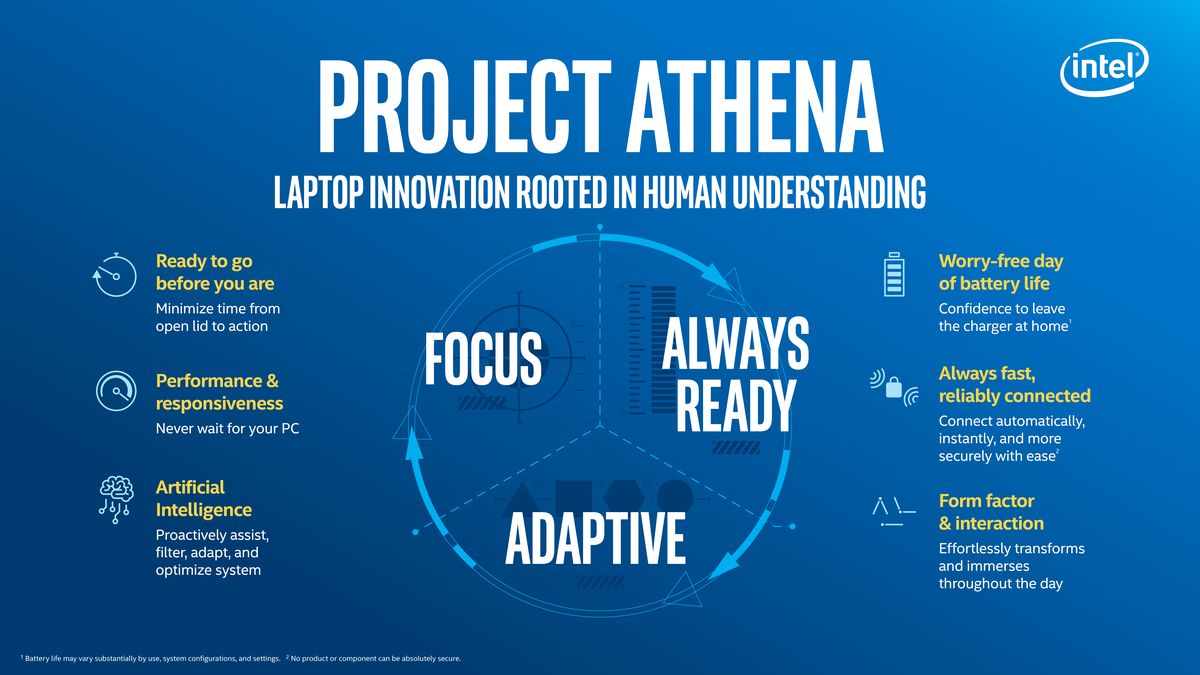You’d be forgiven for wondering if Intel’s Project Athena laptop initiative is a meaningless marketing campaign. When Intel introduced the idea at CES this January, it came with only the vaguest of sales pitches and a hilariously trite tagline: “Laptop innovation rooted in human understanding.”

But Engadget reports that — like Intel’s 2012-era Ultrabook program, which drove Windows manufacturers to make the first laptops that could meaningfully compete with the build quality, battery life and responsiveness of Apple’s remarkable MacBook Air — Project Athena will have at least one specific, concrete promise that you can’t necessarily expect from any given laptop today: nine full hours of real-world battery life.
This is a topic that’s near and dear to my heart. I personally seek out high-capacity laptops like dual-battery ThinkPads and Dell’s XPS 15 with 97Wh battery, and I’ve been following manufacturers’ misleading battery claims for years. In 2017, I pointed out how LG was using a decade-old benchmark tool to claim that its new Gram 14 could run for 23.6 hours on a charge — a benchmark that assumes you’ll barely be using your laptop at all, without Wi-Fi, and with the screen set to very low brightness. Today, most manufacturers have at least upgraded to MobileMark 2014, so they’re only five years out of date.
(My rule of thumb: cut any manufacturer’s battery life estimate in half, and you’ll be in the right ballpark.)
Sure, Intel’s definition of real-world battery life might still wind up being different from yours and mine, but the Engadget story suggests that Intel’s benchmark will tick the right boxes: a wireless web browsing workload, with a bunch of other apps running in the background, and higher screen brightness than before. That’s promising, even if Engadget also notes that manufacturers may be using a few tricks to get there, like automatically dimming the screen when you’re not around.
When I spoke to Intel’s Josh Newman in January (he’s VP of Client Computing and the guy leading up this initiative), he told me that better battery life would involve Intel working closely with the OEMs on not only optimizing each system but actually developing new low-power components, all to get to a place where buyers could truly leave the charger at home:
We’re trying to get to a place where we can promise or provide a clear expectation that for the stuff you do, you mobile go-getter, these laptops will last long in active use, and you can get through the day with confidence. Each year we’ll make that greater and greater, and when we hit our north star, it’ll be just like your phone — where you just take it off the charger and don’t worry about it.
Newman also told us that responsive solid-state drives will be a given in Project Athena laptops — no more slow spinning magnetic platters — and that we should expect fast Wi-Fi 6 (formerly 802.11x) to come standard. They’ll be premium systems first, with the expectation that they may be more broadly available later in 2020 and 2021. I also wouldn’t be surprised if Intel’s upcoming 10nm Ice Lake chips are a requirement, seeing how the company just revealed today that those chips will ship in June.
https://www.theverge.com/2019/5/8/18537744/intel-project-athena-laptops-battery-life

